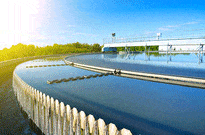Sydney, Australia, 31 October 2018 – The adoption of innovative technology is expected to revolutionize wastewater resource recovery and reuse projects in Australia despite key challenges faced such as ageing infrastructure and financial constraints.
 A recent study published by Frost & Sullivan, Australian Wastewater Resource Recovery and Reuse Market, 2017, highlights ‘corporate and environmental stewardship’ as the most mentioned factor driving growth in wastewater resource recovery and reuse projects in Australia. For most Australian water and wastewater utilities, there is an articulated desire to find a sustainable solution for the future regarding utilizing scarce resources.
A recent study published by Frost & Sullivan, Australian Wastewater Resource Recovery and Reuse Market, 2017, highlights ‘corporate and environmental stewardship’ as the most mentioned factor driving growth in wastewater resource recovery and reuse projects in Australia. For most Australian water and wastewater utilities, there is an articulated desire to find a sustainable solution for the future regarding utilizing scarce resources.
For further information on this analysis, please visit: http://frost.ly/2w3
Frost & Sullivan highlights emerging growth opportunities including:
- Decentralized Systems: Decentralized treatment systems help reduce transportation costs to end-markets thus help improve the competitiveness of recovered product in various end-markets.
- Partnerships with Industrial Sites: Establishing off take arrangements with large industrial customers can help raise the proportion of beneficial reuse of wastewater or recovered product.
- Improving Co-digestion: Presents utilities with the opportunity to improve co-digestion efficiencies in their energy recovery systems through importing prescribed wastes that can be then added to wastewater.
“The approach of ‘doing the right thing’ is driven by the fact that most water and wastewater utilities are government-owned utilities. For instance, the Victorian government required all water utilities to commit to a renewable energy pledge, and this has a significant impact on resource recovery initiatives,” commented Ivan Fernandez, Industry Director of the Industry Practice at Frost & Sullivan Australia & New Zealand.
Other factors driving growth in the resource recovery market in Australia include cost reduction and regulatory compliance. Decentralized treatment and/or recovery systems help reduce transportation costs to end-markets; thus helping improve the competitiveness of recovered product in various end-markets.
The pressure of ageing wastewater infrastructure in the context of population growth, urban development and climate change impacts has driven an increased awareness of changing the closed loop water cycles to resource recovery and reuse within most Australian cities. Hence over time, the concept of sustainability has become more prevalent in Australia’s water and waste sectors.
However, the study also sheds light on ‘regulatory challenges’ as the most mentioned challenge to wastewater resource recovery and reuse projects in Australia.
“The guidelines for the reuse of bio-solids are very strict. For example, the level of semimetals that utilities are allowed to have in bio-solids is relatively low compared to fertilisers currently on the market. The amount (and cost) of testing required makes it difficult for utilities to find a market for recovered material and hence impedes project viability,” added Fernandez.
Despite the challenges, the study by Frost & Sullivan predicts that biological methods using complex organics and electrochemical-based treatment methods will promote the development of Australia‘s water recycling sector and collaboration between Australia‘s water and solid waste sectors will increase.
About Frost & Sullivan
For over five decades, Frost & Sullivan has become world-renowned for its role in helping investors, corporate leaders and governments navigate economic changes and identify disruptive technologies, Mega Trends, new business models and companies to action, resulting in a continuous flow of growth opportunities to drive future success. Contact us: Start the discussion.
Media Contact
Melissa Tan
Corporate Communications – Asia Pacific
P: +65 6890 0926
F: +65 6890 0999
E: melissa.tan@frost.com



